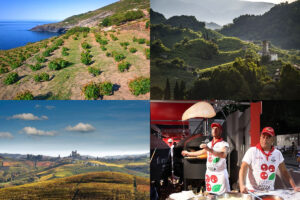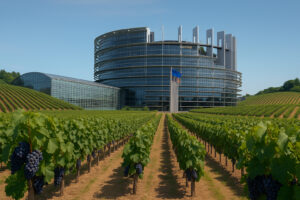The rivalry between Italy and France in the vineyard is renewed year after year: the endless fight about who produces more wine, who has the best territories and who receives more recognitions.
Yet, French and Italian wine are experiencing the same dynamics: an unstoppable decline in domestic consumption, one of the scarcest vintages (2012) in history and sales growth more and more linked to exports.
To get a good idea about French wine in 2012, looking at the data of the trade magazine "Vitisphere.com", we need to start from the end, from a vintage that after the usual confusion about figures, will give 40.7 million liters of wine, 12% less than the average of the previous 5 years. This is a meltdown that primarily affects bulk wines ( less 22.1%), designation of origin wines (less 13%) and PGI (less 12%), and on the terroir level, spares no one: Champagne pays the most with a 37% decrease compared to 2011, while the Loire Valley loses 28% and Burgundy and Beaujolais 26%.
But, just like in Italy, if production pays the price of a stingy summer, export data paints a much more reassuring picture: in the first 8 months of 2012, exports of French wines have started to soar, marking +8% in volume and a 24% in value, amounting to 9.47 million hectoliters and 4.81 billion euros on the average of the previous 5 years, which are the same levels as the record years 2001 and 2003. The driving force is especially wine with a protected designation of origin (+8% in volume and 19% in value), while Champagne, although growing in value (+6%), is down in quantity (less 2%). So, if the European market seems saturated, it is the non-EU countries that are making French wines soar, especially in terms of quantity: +20% in the U.S., +30% in China, Japan and neighboring Switzerland.
The trend that gives rise to greater concern is the one that sees a drop in the number of domestic consumers: in 2012, the percentage of families who normally purchase wine dropped to 86.4%, down on the previous 5 years, but there’s a positive outcome since the average cost per single purchase is growing, as are the number of bottles purchased.
Copyright © 2000/2025
Contatti: info@winenews.it
Seguici anche su Twitter: @WineNewsIt
Seguici anche su Facebook: @winenewsit
Questo articolo è tratto dall'archivio di WineNews - Tutti i diritti riservati - Copyright © 2000/2025








































































































































































































